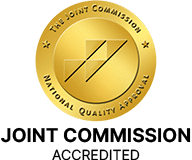

Recognized for excellence in substance abuse and behavioral health treatment by the Joint Commission

Labyrinth Walking as a Part of Addiction Recovery: Finding Peace One Step at a Time
Discover how the ancient practice of labyrinth walking can support mindfulness, reduce stress, and strengthen the journey to recovery.
Mental Health
Mental health is “a state of well-being in which the individual realizes his or her own abilities, can cope with the normal stresses of life, can work productively and fruitfully, and is able to make a contribution to his or her community.”

Recovery from addiction is an overwhelming process. In moments when you’re unsure about your recovery journey, why not turn to...

Positive Effects of Social Media on Mental Health
Social media platforms often get attention for their potential negative impact on mental health, with issues like cyberbullying, social comparison,...

Somatic Therapy
Somatic therapy is a groundbreaking approach to mental health that shifts focus from the mind to the body, offering a...

A Daughter in Crisis
When a child struggles with mental health or addiction issues, the effects ripple through the entire household. What happens to...

Signs Your Body Is Releasing Trauma During or After Addiction
Trauma occurs when a disturbing experience has lasting effects on a person’s mental and physical well-being. Events like attacks, disasters,...

Questions for Recovering Addicts
While dealing with detox and the associated withdrawal symptoms that come from abruptly quitting drugs or alcohol is indeed challenging,...

Build Resilience and Thrive: Download Your Free Mental Health Toolkit
Mental health is the foundation of a fulfilling and balanced life, yet it’s easy to feel overwhelmed when tough times...

Hypnosis for Drug Addiction Near Me
Drug addiction is a chronic condition that involves using a substance continuously and compulsively, even when the effects are harmful....

Addiction Lies and Relationships
As shown by the United States Department of Health and Human Services, one in seven people between the ages of...

